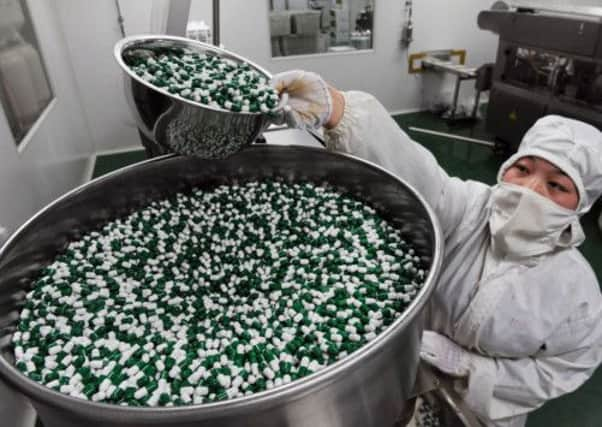Age-old reaction to China bird flu fears


Panicked by the rise in cases, many Chinese are seeking out traditional remedies.
Sales of a dried root called Ban Lan Gen, have surged.
Health authorities in several provinces as well as the National Health and Family Planning Commission and the State Administration of Traditional Chinese Medicine have issued directives on how to protect against the virus in an attempt to calm public anxiety, some of which include taking Ban Lan Gen.
Advertisement
Hide AdAdvertisement
Hide AdIn Shanghai – where 11 people have died from the virus – along the busy shopping area of Nanjing East Road, a number of pharmacies reported that sales of Ban Lan Gen had increased massively in recent weeks.
A packet of Ban Lan Gen costs £1.15 and the brand sold instructed it be taken three times a day mixed in hot water.
“Usually three to five people came to buy this a day but for the past few weeks more than 20 come every day,” said one Shanghai pharmacist who did not want to be named. Just down the street in the Shanghai No 1 Pharmaceutical Building, another large pharmacy, the counter selling Ban Lan Gen and other flu remedies was the busiest in the shop.
A pharmacist who was busy restocking shelves said they had been selling a lot more of anything that is considered anti-viral, particularly Ban Lan Gen. “There are definitely more people buying it. For the first few days after the outbreak of bird flu we sold 300 to 400 packets,” he said, also not giving a name.
Ban Lan Gen is produced from the root of the flowering plant known as woad, or Jerusalem Asp, and once used by ancient Britons to dye themselves blue. Thought to have anti-viral properties, it is recommended by traditional medicine practitioners for colds and fevers. The roots tend to be dried and processed into granules to be dissolved in hot water.
Professor Peter Openshaw, director at the Centre for Respiratory Infection at Imperial College London, said: “It would be dangerous to take a remedy like Ban Lan Gen and to then think you are safe and don’t need to protect yourself in other ways.”
The State Administration of Traditional Chinese Medicine said yesterday traditional Chinese medicine had been used in the treatment of 24 cases of the virus and cited the case of a girl in Beijing who has since been discharged from hospital who was treated with both modern and traditional medicines.
Xu Zhiren, an official with the State Administration of Traditional Chinese Medicine, was quoted by the state-run China Daily newspaper as saying that clinical practices have proven outstanding effects of traditional Chinese medicine when used at an early stage of an illness.
Advertisement
Hide AdAdvertisement
Hide Ad“What’s important with these recommendations is to see the evidence they have worked consistently and the only way you can get that is through the same kind of trials that regular medicine goes through,” said Professor David Heymann, senior fellow at the Centre on Global Health Security at Chatham House. “It would be imprudent if the studies are not there to show that this is effective to be using this and not using an anti-viral which has been shown to be effective.”
Some mystery still remains about the source of the virus. Thousands of poultry have been slaughtered and many live poultry markets shut down in an effort to stop virus spreading. However, state media has reported 40 per cent of those infected had no contact with poultry.